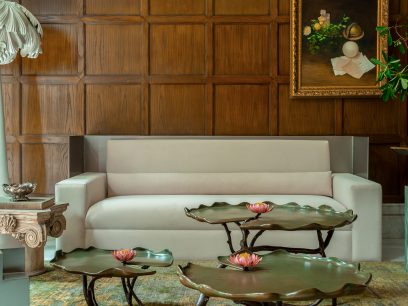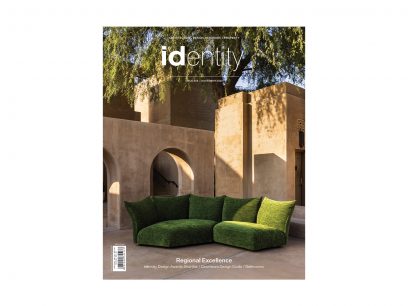Copyright © 2025 Motivate Media Group. All rights reserved.
MENASA – Emirati Design Platform at Expo 2020 brings together local and international designers to focus on local craft
The platform is part of Expo 2020 Dubai’s Design and Crafts Programme

What can design and craft reveal about the essence of a place and its people? How can it connect and find shared values with others? Expo 2020 Dubai’s Design and Crafts Programme has launched MENASA – Emirati Design Platform to offer a glimpse of what these answers could look like. Showcasing more than 40 local and international designers who have created exclusive curated design collections, MENASA tells the stories of the UAE through the lens of its crafts and artisans.

While the millions of visitors to the Expo site will have the opportunity to explore and experience local Emirati crafts and traditions through MENASA, many will perhaps be pleasantly surprised at the outcome. The platform’s curated and experimental approach showcases traditional crafts through a contemporary lens, which has given rise to unexpected results. By collating local, regional and international voices, what we eventually find is a collaborative spirit that highlights the power of craft as a tool for communication and cross-cultural dialogue.

“The collective approach of MENASA, which means ‘platform’ in Arabic, is inspired by the theme and spirit of Expo 2020 Dubai: ‘Connecting Minds, Creating the Future’. By bringing together artisans and designers from the UAE and around the world, we are nurturing a rich cultural and creative dialogue that will contribute to a meaningful legacy after Expo 2020 closes its doors,” explains Dr Hayat Shamsuddin, Senior Vice President, Arts and Culture, Expo 2020 Dubai.

MENASA is divided into two main counterparts: ‘Craft Stories’ and ‘Designer of the Week’, the latter highlighting 24 UAE-based emerging and established designers as well as public and private organisations that support the local craft and design community, revealing the breadth and vibrancy of the local contemporary design scene. Each will present new collections that were especially created for MENASA, with many expanding outside their usual design practices.

‘Craft Stories’, on the other hand, presents a dialogue between local and international designers and artisans who have been invited to collaborate with and explore Emirati crafts and culture in new ways. Traditional skills and heritage merge with contemporary approaches and innovation in techniques and materials, highlighting seven crafting traditions including clay, safeefah (palm frond weaving), talli (embroidery), sadu (Bedouin weaving), gargour-making (wire-crafted fish traps), pearl diving and coffee-making.

Each craft is matched with a local and international designer as well as a design organisation in a series of collaborations that reveal a multi-faceted story of the UAE, its landscape, people, values and identity. A series of documentaries, shot on location around the UAE, further highlights these stories, offering insights into the coming together of diverse cultures through poetic narratives.

The pairing of local and international designers was done deliberately to reveal specific stories from the UAE, explains Samer Yamani, Curator, MENASA – Emirati Design Platform, Expo 2020 Dubai. The story of ‘Safeefah’, for example, is one of ‘weaving communities’, as the craft itself is identified as a communal act where (predominantly) women work together to weave various objects using palm fronds. To tell this craft story, Yamani selected Estudio Campana, who had set up the Campana Institute in the 1980s to offer creative education to marginalised children and families. The designer brothers have been paired with Al Ghadeer UAE Crafts, a non-profit organisation that empowers underprivileged women through sustainable Emirati crafts.

“Community building through creativity is a core message [here], so the selection of Estudio Campana and Al Ghadeer was not random, but [made] because they have an aspect that unites them,” Yamani shares. “I was trying to pair partners who share similar values and vision. [Here,] design becomes the tool of bringing them together, and craft becomes the medium.”
Another collaboration brings together Emirati sisters Sheikha and Afra Bin Dhaher and Rwandan artist Chris Schwagga to design a collection called ‘Safari – Barari’, inspired by the Gargour craft, that tells the story of the flora and fauna of both regions. The collection forms two parts. One part, designed by Schwagga and crafted by female artisans from Rwanda, features metal sculptures of the UAE’s oryx and the Rwandan ‘Inyambo’ royal cows – emblematic animals that symbolise beauty and prosperity across both cultures; while the second part includes accessories designed by the Bin Dhaher sisters that recreate a traditional Rwandan beadwork craft which is then wrapped around the metal-wire sculptures to resemble headdresses.

“We started by researching existing Rwandan beaded accessories to get an idea of the craft itself… then, we looked at our local flora and landscape and started gathering information on the plants that we found most interesting, visually,” the sisters share.
“From there, we began designing the patterns; each belt dedicated to a particular element (fauna or flora). Because the beadwork was based on a grid, it automatically resembled pixel art. We thought it would be very interesting to explore this further and try to make it more dynamic and break the grid, in a sense. The results were very interesting as they were re-interpreted by the artisans who did the beadwork. Whatever element they added or eliminated became part of the process.”

“[The process] was interesting since the wire used for the Gargour craft is very similar to the wire I use in the making of my sculptures in Rwanda, so it made the process easy for the artisans that came with me to execute the work,” Schwagga says.
“Our artistic universes aligned beautifully,” he adds. “I was pleasantly surprised by our similarities and especially how culture and nature are some of the main sources of inspiration. The beaded belt has been part of the culture in Rwanda for the longest time; they have great value and are a sign of beauty. By decorating the cow and oryx with them, we are celebrating them the way the ‘Inyambo’ cows are celebrated in Rwanda.”

The seven collections from Craft Stories (alongside the wider content of MENASA) will be showcased and available for sale in a dedicated design space located on the ground level of the Rove Expo hotel, next to Al Wasl Plaza. It also features a dramatic 13-metre-wide window display designed by Carmello Zappulla and Rami Al Ali, who merged 3D printing with local crafts.
The Latest
In photos: Winners at the identity Design Awards 2025
Presenting the winners of 2025 identity Design Awards.
Identity Design Awards 2025 – Winner’s List
Here are the winners of the identity design awards 2025
Hogg’s Hollow
Set along the bend of a quiet river and sheltered within a mature, tree-lined enclave of Toronto, this riverside residence offers a dialogue between structure and softness, restraint and warmth
Salone del Mobile.Milano Paints Riyadh Red
The “Red in Progress” installation marks a powerful first step toward the city’s full-scale 2026 edition
An interview with Fabio Masolo on the Giorgio Collection
A conversation on passion, timeless design, and bringing Italian craftsmanship to the world
European Design, Instantly Within Reach
In a city where design dreams often come with long lead times, Caspaiou brings a refreshing difference – luxury, curated and available now
Shaping Tomorrow’s Interiors
Here’s what awaits at the OBEGI Home showcase at Dubai Design Week
Maison Margiela Residences
Conceived by Carlo Colombo, these bespoke residences will be located on the Palm Jumeirah
The Desert Chapter by Kohler and Marco Maximus
A fusion of design, culture, and the colours of nature
Downtown Design 2025 – The Highlights
A showcase of innovation, craftsmanship, and design excellence
In conversation with: Simon Wright of TGP International
identity interviews the Chairman and Founder of TGP International on the beginnings of the business and how the company shapes human experiences and memories in the hospitality industry.
We Design Beirut Edition Two: A Collective Revival
Uniting designers, artisans, and visionaries to reimagine Beirut’s future
















